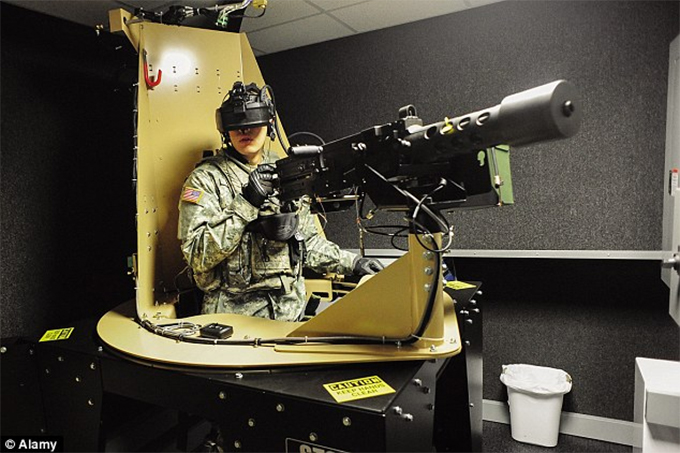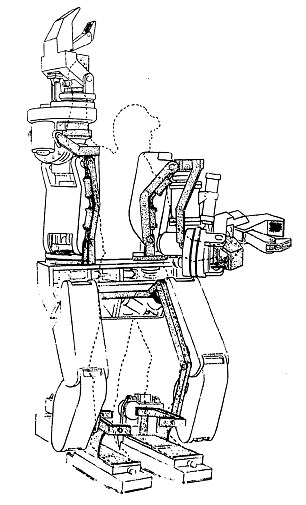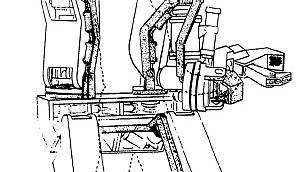Rise of the super soldier: Liquid armour, indestructible exoskeletons and weapons that never miss revealed as the future of warfare
Source: dailymail.co.uk

War has been one of the greatest spurs to science in history.
Developments as diverse and far-reaching as space travel, superglue, duct tape and microwaves owe their origins beneath camouflage netting and behind sandbags.
Today's military innovations, though, are focused not just on getting the job done, but doing so as quickly as possible and bringing the soldiers home to their families in one piece.
Above photo: Wearing head-mounted displays (HMD) or VR glasses such as Oculus Rift, soldiers can explore scenarios, such as the challenges of administering first aid to wounded comrades while under enemy fire, in a realistic 360-degree 3D environment (pictured) that changes the image with the movement of the head and the body.
The (Virtual) Realities of War
For example, simulations may already have a place in air force training, but soldiers can now put their skills to the test in virtual reality combat zones.
Wearing head-mounted displays (HMD) or VR glasses such as Oculus Rift, soldiers can explore scenarios, such as administering first aid to wounded comrades while under enemy fire, in a realistic 360-degree 3D environment that changes the image with the movement of the head and the body, via an in built tracking system.
Some battlefield simulation programs are even more realistic still.
Super Soldiers: How Tech Is Transforming The Future Of Warfare is in the latest issue of How It Works Magazine on sale now (pictured)
Polish troops train with integrated feedback that administers a small electric shock when the soldier gets ‘shot’.
While the US Department of Defense is so committed to the idea, it wants every soldier to have a virtual avatar that can be customised to reflect their individual skills and weaknesses.
Nimble and Agile Exoskeletons
Elsewhere, soldiers powered by exoskeletons may have long been a staple of science fiction, but they're too becoming reality.
Taken from the Greek word meaning 'outer skeleton', exoskeletons are inspired by the hardened shells of the insect world and involve a frame of hydraulics which magnify the leg and arm movements of the wearer, allowing them to take more effortless strides and carry greater weights.
Military exoskeletons trialled as far back as the 1960s - such as General Electric's Hardiman - were able to increase the magnitude by a factor of 25.
This made lifting 25lb (11kg) loads as easy for the wearer as lifting 1lb (0.5kg), and had force feedback - similar to a XBox or PlayStation controller - so the operator could get an idea of the resistance that he or she was experiencing.
These projects were ultimately unsuccessful as the early exoskeletons reacted unpredictably - and sometimes violently - to anything less than gentle movements.
While many current exoskeleton projects have medical uses in mind, XOS and XOS 2, developed for the US Army by Raytheon-Sarcos, Hercule by firm RB3D, and Human Universal Load Carrier, better known by its acronym HULC, are primarily military endeavours.
Developed by Ekso Bionics and Lockheed Martin, Hulc is a lower extremity exoskeleton powered by a lithium-ion battery that works to redistribute the weight across the hips and legs, allowing its operator to comfortably carry 200lbs (91kg) with less effort.
The increasing weight of a soldier's gear, which includes a standard weapons, ammunition, rations, water, first aid kits, basic tools, satellite phone, GPS, helmet and body armour is a growing worry for commanders.
Early military exoskeletons (General Electric's Hardiman 1960s prototype pictured) were unsuccessful as they sometimes reacted violently
+11
Early military exoskeletons (General Electric's Hardiman 1960s prototype pictured) were unsuccessful as they sometimes reacted violently
 Early military exoskeletons (General Electric's Hardiman 1960s prototype pictured) were unsuccessful as they sometimes reacted violently |
'Distributing and managing a soldier's load can give enormous benefits in terms of combat endurance and efficiency,' explained Justin Bronk, military sciences analyst at The Royal United Services Institute for Defence and Security Studies.
'People ended up toting around up to 40 kilos [88 pounds] of stuff which means if they've been on patrol for a couple of hours and they go prone when they start taking fire, often they just can't get back up again!;
Far more flexible than earlier exoskeletons, sensors mounted throughout Hulc's titanium frame and linked to an on-board microcomputer spur electric motors into action allowing the limbs to match the operator's movements instantly.
Lockheed's ambitions is that the system will allow for troops to be equipped with otherwise back-breakingly heavy sensor gear or - as Hulc offers no physical protection in itself - the sort of body armour that simply impractical for a soldier on foot to carry.
According to Mr Bronk, what's really holding them back from a roll out across battlefields is simple - energy.
'The basic problem with exoskeletons still is you need about ten kilowatts of power to run a typical load-bearing, armour-protected exoskeleton,' he continued.
'And you need to be able to run it for ten hours or so to make it mission capable because if the power runs out, an exoskeleton becomes a massive impediment to ability rather than a bonus.'
Lockheed is currently investigating electrochemical and solid oxide fuel cells to solve this problem, and the plan is for a 'long-range HLC' with a 72-hour battery life and bursts of speed up to 10mph (16 km) per hour.
[...]
Read the rest: dailymail.co.uk






















